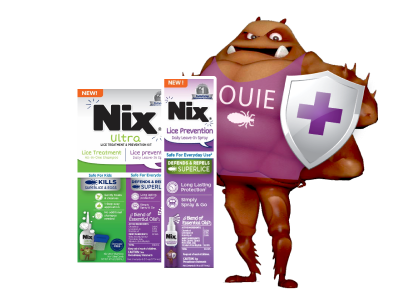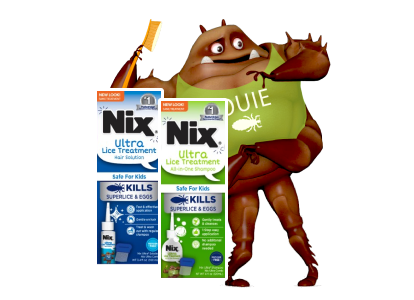
My Kid’s Head Is Itchy—Is It Lice?
You’ve caught your child scratching their head repeatedly—is it lice? Maybe... but maybe not. Lice are not the only reason a scalp turns itchy, but since lice can quickly spread to other people, it’s good to know what is causing your child’s head to itch.
Causes of an Itchy Scalp
The most common causes of an itchy scalp are dandruff or a condition called seborrheic dermatitis. Dandruff shows up as loose flakes on the scalp and in the hair, which are often easy to see. Seborrheic dermatitis is an inflammatory condition often caused by an overgrowth of yeast. This is known as “cradle cap” in infants and can cause dandruff and scaly red patches of skin on the scalp, face, upper chest and back.
Other conditions that can cause an itchy scalp include psoriasis (an autoimmune condition that affects the skin), ringworm or a bacterial infection. An allergy to dyes, perfumes or chemicals used in shampoo, conditioner, and other hair products can also cause an itchy scalp resulting in a condition called eczema or atopic dermatitis.
Of course, lice also can cause an itchy scalp, but because the itching is caused by an allergic reaction to bites from the head louse, the itchiness can take some time to develop.
If your child’s itching is near-constant or worrisome, has lasted for days or weeks and you don’t see lice, consider calling or visiting your child’s doctor or dermatologist (skin doctor).
How to Recognize Signs of Lice
If a close friend, classmate or teammate of your child has been diagnosed with lice, then you will want to immediately look for signs of lice infestation on your child’s scalp. If you do not find lice, it is recommended to continue to inspect hair daily for 9-12 days for signs of head lice. You may want to use a daily lice prevention product like Nix® Lice Prevention Daily Leave-In Spray. It’s simple and safe. You just spray on your child’s hair once or twice a day. And if your child does have lice, other family members can use the preventive spray to help keep the lice from spreading.
Common symptoms of head lice include:
- Itching, especially behind the ears or the back of the neck
- Scabs or blood spots on the scalp
- Difficulty sleeping (head lice are most active in the dark)
- Irritability
The first time someone has lice, they may have no symptoms especially if the infestation is not severe.
Even if you see flakes and think your child may just be itching due to a skin condition or dandruff, it’s still a good idea to do a lice head check to be certain.
How to Do a Lice Head Check
Checking for lice is pretty easy, but you want to make sure you are thorough.
First, you will want to do the head check in a well-lit area. Use a Nix® comb to separate the hair into small sections, starting at the base of the neck. Using a magnifying glass will help you look more closely at the scalp. Lice and their eggs (nits) are tiny, so they can be hard to see.
Adult lice are usually dark brown and look like sesame seeds. They may be crawling on the scalp or on the hair shaft. The nits (or lice eggs) can be yellow, brown, or tan. They look like tiny, unmoving seeds and are firmly attached to the hair shaft. More help for identifying lice is on our What Are Lice page.
You can also visit our How to Check for Lice page for detailed instructions on the tools you’ll need and the steps to take. There’s even a video that shows you how to check for lice on a child.
One Last Tip
If your child is in school, camp or sports seasons, it’s a good idea to keep Nix® treatment products on hand. This way, if you do find lice, you can start treating right away.
Oh, and one other cause of itching can be thinking, talking or even reading about head lice. So don’t be surprised if you start scratching your head during or after reading this article. But don’t worry, that symptom should go away quickly.



